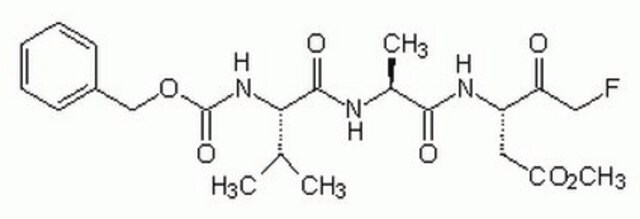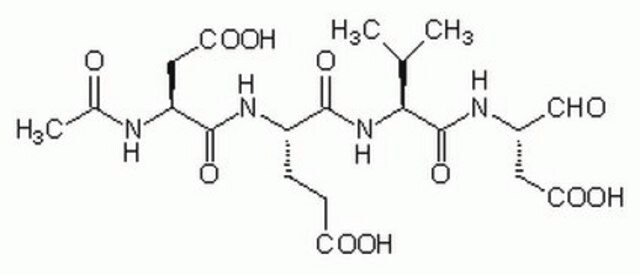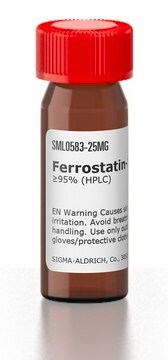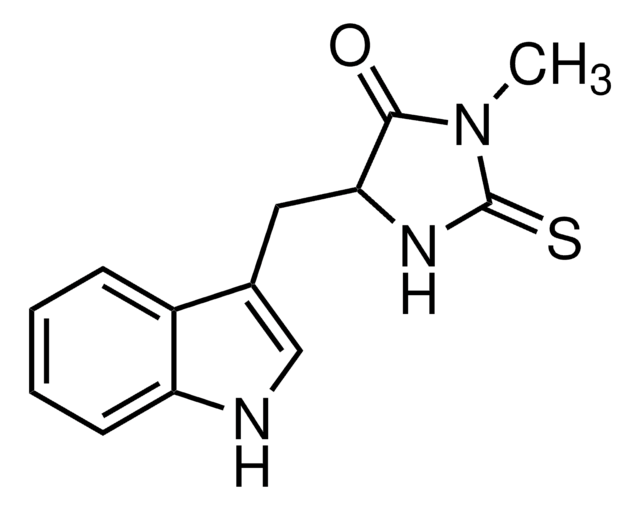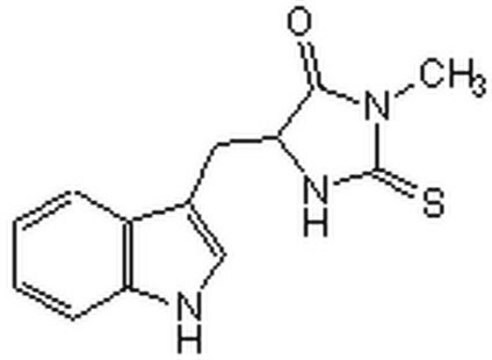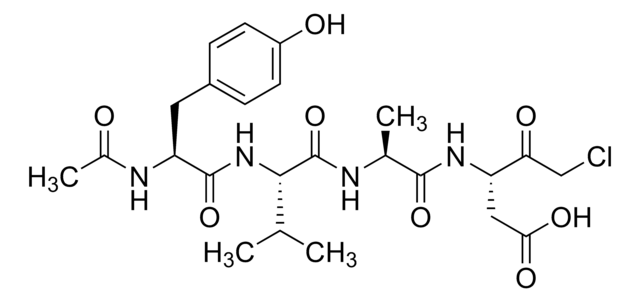264155
Caspase-3 Inhibitor II
The Caspase-3 Inhibitor II, also referenced under CAS 210344-95-9, controls the biological activity of Caspase-3. This small molecule/inhibitor is primarily used for Cancer applications.
Synonim(y):
Caspase-3 Inhibitor II, Z-D(OMe)E(Ome)VD(OMe)-FMK
About This Item
Polecane produkty
Poziom jakości
Próba
≥90% (TLC)
Postać
solid
producent / nazwa handlowa
Calbiochem®
warunki przechowywania
OK to freeze
desiccated
kolor
white to slightly brown
rozpuszczalność
DMSO: 5 mg/mL
Warunki transportu
ambient
temp. przechowywania
−20°C
InChI
1S/C30H41FN4O12/c1-17(2)26(29(42)33-20(22(36)15-31)13-24(38)45-4)35-27(40)19(11-12-23(37)44-3)32-28(41)21(14-25(39)46-5)34-30(43)47-16-18-9-7-6-8-10-18/h6-10,17,19-21,26H,11-16H2,1-5H3,(H,32,41)(H,33,42)(H,34,43)(H,35,40)/t19-,20-,21-,26-/m0/s1
Klucz InChI
GBJVAVGBSGRRKN-JYEBCORGSA-N
Opis ogólny
Działania biochem./fizjol.
caspase-3, caspase-6, caspase-7, caspase-8, caspase-10
Ostrzeżenie
Sekwencja
Rekonstytucja
Inne uwagi
Masuda, Y., et al. 1997. Biochem. Biophys. Res. Commun. 234, 641.
Nicholson, D.W. 1996. Nature Biotech. 14, 297.
Schlegel, J., et al. 1996. J. Biol. Chem. 271, 1841.
Nicholson, D.W., et al. 1995. Nature 376, 37.
Informacje prawne
Kod klasy składowania
11 - Combustible Solids
Klasa zagrożenia wodnego (WGK)
WGK 1
Temperatura zapłonu (°F)
Not applicable
Temperatura zapłonu (°C)
Not applicable
Certyfikaty analizy (CoA)
Poszukaj Certyfikaty analizy (CoA), wpisując numer partii/serii produktów. Numery serii i partii można znaleźć na etykiecie produktu po słowach „seria” lub „partia”.
Masz już ten produkt?
Dokumenty związane z niedawno zakupionymi produktami zostały zamieszczone w Bibliotece dokumentów.
Klienci oglądali również te produkty
Nasz zespół naukowców ma doświadczenie we wszystkich obszarach badań, w tym w naukach przyrodniczych, materiałoznawstwie, syntezie chemicznej, chromatografii, analityce i wielu innych dziedzinach.
Skontaktuj się z zespołem ds. pomocy technicznej
